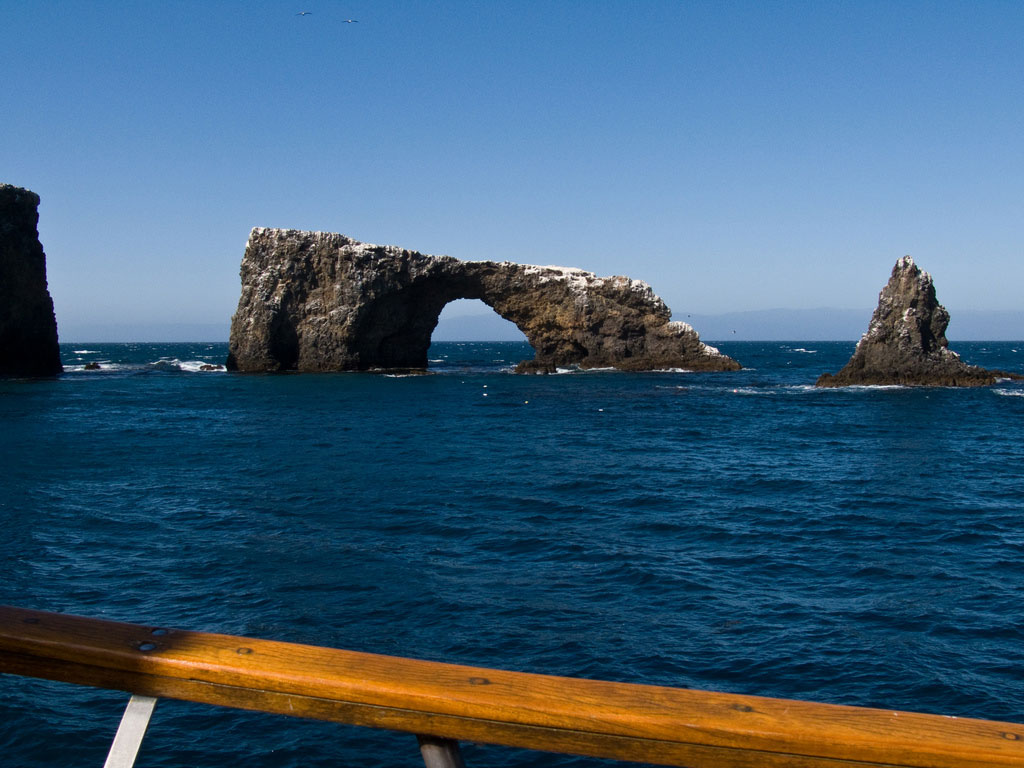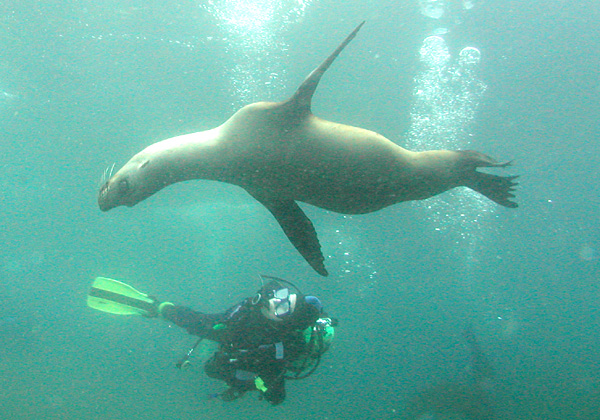There are many less known locations in California to dive in which are still worthy of being discovered by the general diving community. Many divers head immediately to the popular waters around San Diego, especially La Jolla. The waters off the Monterey Peninsula also draw the crowds, thanks to the dramatic shore dives on natural reefs, and availability of dive shops, charters and hotels.
With a programme of expanding a series of small, historic protected areas and designing new ones, California is working hard to protect more and more marine habitats and to keep its coastline intact for future generations. You can help support their work by responsibly diving in the more remote locations, where you will be rewarded with less other dive boats and more wildlife.
Story submitted by Jonny Rowntree, independent contributor.
Do you have a story you would like to share? Email us here!
Naples State
Set within a marine conservation area, Naples Reef offers a remote, wilderness-type dive for the more experienced diver. Located off Santa Barbara’s Gaviota Coast, this stunning reef features arches, caves, pinnacles and ledges. On the reef, diving and snorkelling are fantastic as the complex bottom structure hosts an extraordinary diversity of marine life. Surge and current are often significant however, so this is a destination for more experienced divers on the whole.
While small in size, Naples Reef is an exceptionally rich, productive habitat, with anemone-covered underwater walls rising 30-feet from the sea floor. A beautiful, thick kelp forest supports a variety of fish and wildlife. There are large numbers of reef fish such as kelp bass, sheephead wrasse and even the occasional white sea bass or yellowtail. Marine mammals including sea lions, pelicans and harbour seals are often seen swimming and playing around the area. Kelp bass, rockfish, colourful nudibranchs, red gorgonians, and a variety of crabs, lobster and scallops all share the reef. This coastal area is home to many threatened and endangered animals such as the steelhead trout, the tidewater goby, the white-tailed kite, and the red-legged frog.
To get there, you’ll need to take a small boat or kayak the trip of several miles in each direction from either El Capitain State Beach to the north or the Bacara Resort in the south.
Related Story: Anacapa’s WWII Bomber: The Wreck of the Avenger
The many different dive sites here offer something for all levels of diver. The Mine Sweeper site is a good choice for beginners, a large shipwreck just 40 feet underwater and with lots of curious marine life swimming around. Other good novice spots include Naples Barge – where an old barge forms a nice artificial reef in shallow waters, and Tea Cup Ledges – a natural series of ledges offering moderate visibility, soft corals, large sponges and plenty of marine life.
More advanced, technical divers will appreciate Fantastico, a site located in over 100 feet of water, the focal point of which is a 200-foot freighter which sank in 1993 during a storm. The mast, rudder, propeller and rigging are still visible, but the main hull has collapsed on itself. Swim carefully! Another good choice is Black Hole – 27 miles offshore of Naples. The site is a sinkhole around 100 feet in diameter. Narrowing at about 100 feet and then opening up again, this site offers an adventure of caverns, ledges and outcrops for the advanced diver.
Channel Islands
This region consists of eight islands and offshore rocky outcrops, stretching offshore from the Southern Californian coast. Each island has a unique history and collection of marine life. In 2003, the northernmost of these islands, off Santa Barbara, received protection by the creation of a dozen large marine protected areas.

Furthest west, San Miguel is the least visited of the Channel Islands. Its waters are cooler, with more nutrients and these factors mean it is home to the greatest abundance of marine life. The sea beds are thick with giant kelp, frequented by huge sheephead wrasse, vastly overfished in other parts of this coastline. Other life easily spotted includes black sea bass, bat rays, California moray eels and anemones. This forest is fed by the Humboldt and Davidson currents, which bring cool water down from the north, fuelling kelp growth of up to an incredible two feet per day.
There are a profusion of dive sites around San Miguel. On the western tip is Point Bennett, and is rich with marine mammals such California and Stellar sea lions, northern and Guadalupe fur seals, as well as Harbour and Northern elephant seals, most of which breed here.

Diver and juvenile Sea Lions, Anacapa Island. Credit: Clark Anderson
If you like underwater photography, you’ll enjoy exploring Wyckoff Ledge, which is fairly protected from the current and is home to wolf eels, rare mosshead warbonnets and lots of nudibranchs. The Judith Rock Pinnacle is another great dive site for its beauty, although it often has strong currents. Richardson Rock is another attractive pinnacle which is excellent if you can dive down deep – like many of the San Miguel sites, there are often strong currents and surges nearer to the surface.
Other Channel Islands worth diving include Catalina, San Clemente and Anacapa. Although these are the busier of the Channel Island destinations, they are still far quieter than the most popular sites along the Californian coastline. Landings Cove on Anacapa boasts a large underwater arch that you can easily swim though, with excellent fish and smaller marine life. Pyramid Cove on San Clemente is a brilliant all-round large site, with beautiful kelp and sea fans all around.

The Farallon Islands
While much less visited than many other Californian diving spots, these islands are an internationally recognized ecotourism hotspot. Forming the Southeast Farallon Island State Marine Reserve, the Farallons are home to a huge and varied assortment of birds, marine mammals and great white sharks. The islands lie 20 miles off the coast.
Cold water upwelling produces large plankton blooms, fuelling the growth of much marine life. Humpback whales and blue whales travel all the way from southern Mexico and Costa Rica to feast on the abundance of anchovies and krill here. Leatherback sea turtles journey from Indonesia to eat the jellyfish, and sea birds called shearwaters come from Australia to fatten up on the fish. The shelter and isolation of the magnificent Farallon Islands make these outcrops the largest seabird colony in the United States. Five different types of seal and sea lion also shelter there, which in turn are food for Great Whites.
Related Story: Getting my feet wet with Great White Sharks
Beyond the realms of traditional diving, thrill-seekers can go cage-diving to get face-to-face with these truly awesome animals. The sharks come to the Farallons to dine on the local population of Northern Elephant Seals – and it’s this grisly spectacle you’re likely to see on your visit. The operators here have the biggest shark cages in the world – and you don’t actually have to be a certified diver to take part, and it is an all-day activity, lasting around 6-7 hours. The best time of year to do this is September to November.
Story submitted by Jonny Rowntree, a freelance writer based in Northern England, working with Exsus, specialising in Californian luxury holidays
